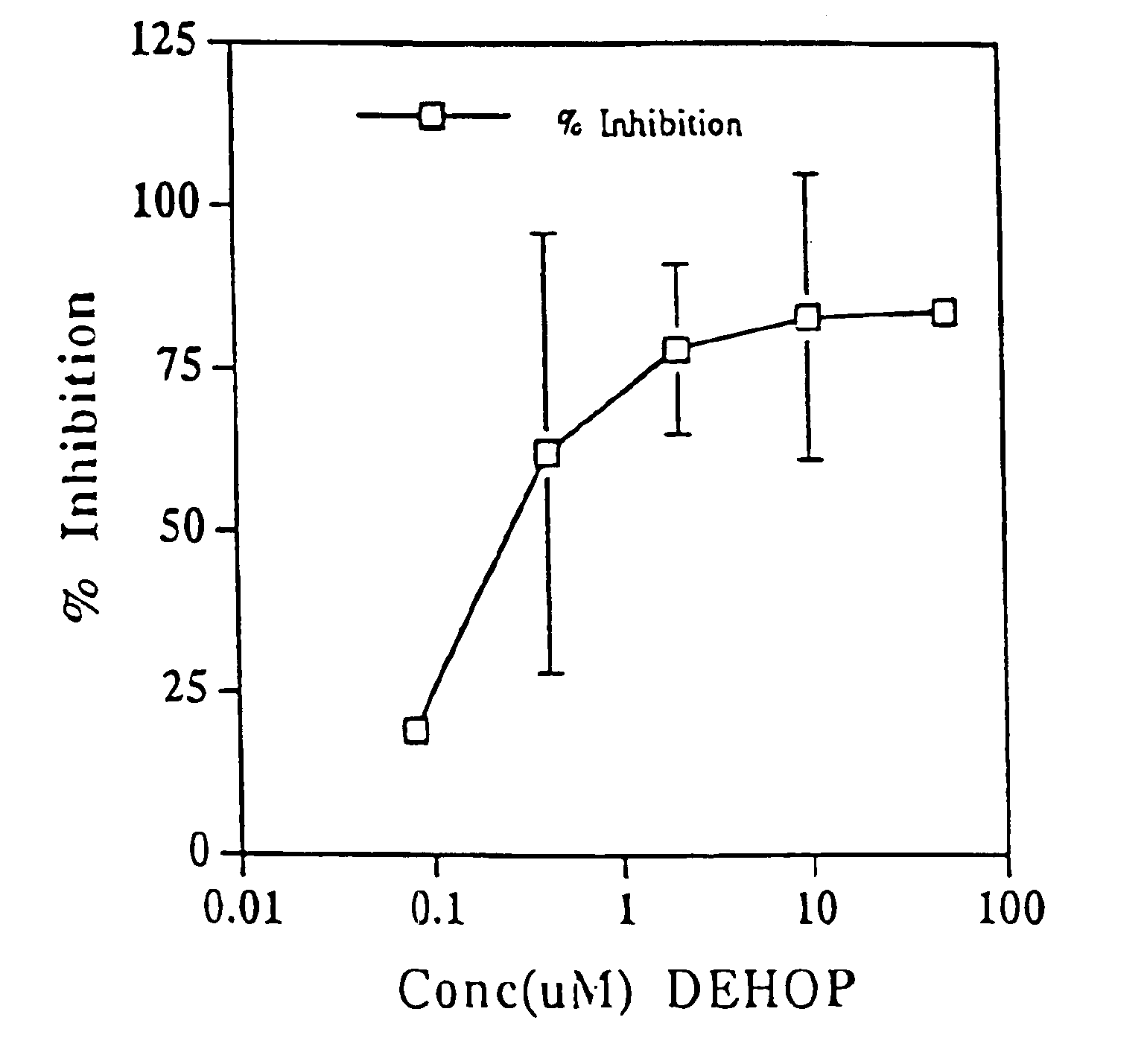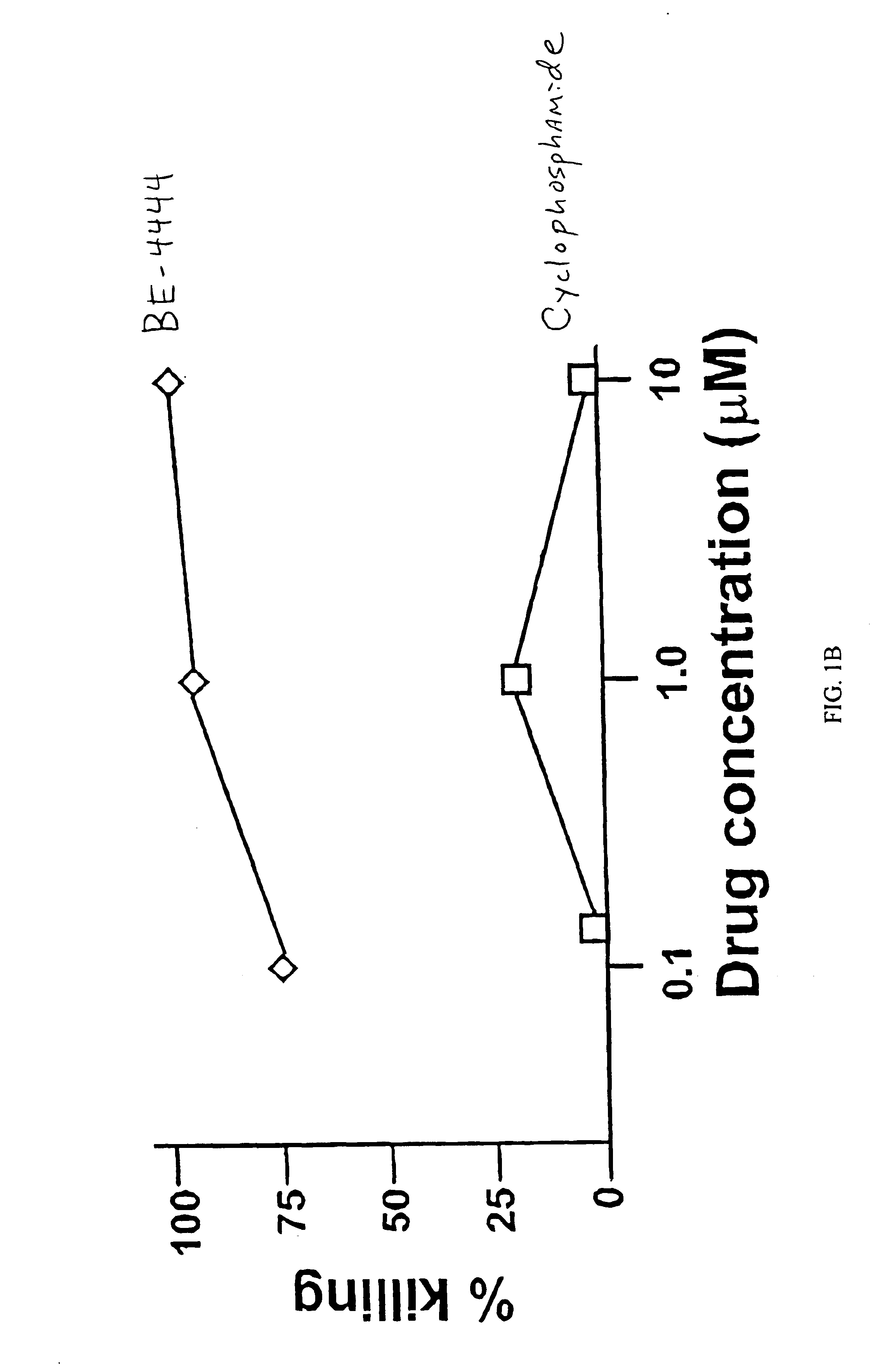Methods for modulating macrophage proliferation using polyamine analogs
a polyamine analog and macrophage technology, applied in the field of macrophage proliferation, can solve the problems of cell proliferative diseases, major health problems and threats worldwide, and profound mental deterioration and ultimately death, and achieve the effect of modulating macrophage proliferation
- Summary
- Abstract
- Description
- Claims
- Application Information
AI Technical Summary
Benefits of technology
Problems solved by technology
Method used
Image
Examples
example 1
Testing Various Polyamine Analogs for Effect on Macrophage Proliferation in the Context of Macrophage-Associated Disorders
Separation of Peripheral Blood Monocytes
[0117]We had previously separated peripheral blood monocytes on Ficoll. We found that a standard Ficoll Hypaque separation gave lower yields of monocytes from demented patients than from HIV-infected controls (44 vs 67%, respectively). Several demented patients yielded under 10% of predicted, suggesting that a subset of monocytes was being missed. We then used Percoll gradient separation, which allows for denser cells to be captured. A two-step gradient was prepared in 15 mL conical tubes: bottom layer of 1.087 density Percoll, overlaid with 1.077 density. 1.5 mL whole heparinised blood was mixed with an equal volume of isotonic saline. This blood / saline was layered over the gradient and centrifuged. Cells from the 1.077 and 1.087 interfaces were collected, combined, and washed in 5 volumes of RPMI 1640. Specimens from pati...
example 2
Suppression of in Vitro Cell Killing by Supernatants from Peripheral Blood from an AIDS Dementia Patient
[0123]We have previously observed a cell killing effect of mononuclear cell supernatants from peripheral blood of patients with AIDS dementia. Pulliam et al. (1997) Lancet 349: 692-695. We tested a similarly prepared supernatant which was treated with the polyamine analog DEHOP.
Preparation of Mononuclear Cell Supernatants
[0124]To collect a maximum number of monocytes (both heavy and light), we used a one-step Percoll protocol. 1.5 mL whole heparinised blood was mixed with an equal volume of isotonic phosphate-buffered solution and layered over 5 mL Percoll at 1.087. The cells were centrifuged, washed, and resuspended in RPMI 1640 supplemented with 10% fetal calf serum at 10° / mL. To separate non-adherent lymphocytes from adherent monocytes, culture dishes were washed with RPMI after overnight incubation. The adherent cells were re-fed with RPMI and cultured for 7 days to obtain sup...
example 3
Detection of Proliferating Macrophages in Patients with Alzheimer's Disease
Participants and Methods
Blood Samples
[0129]Individuals with Alzheimer's disease dementia (6 patients) were recruited from Laguna Honda hospital, University of California at San Francisco, and San Francisco General hospital. Exclusion criteria included history of head injury, seizures, or multiple sclerosis, active opportunistic infection, active opportunistic central nervous system infection or lymphoma, cerebrovascular disease, major psychiatric illness, other known causes of dementia, or pre-existing causes of brain disorder. Participants or their representatives gave informed consent. Blood was obtained in accordance with the Committee on Human Research. Negative controls (6 patients) were recruited from laboratory personnel and gave informed consent. Non-AD diseased control categories were multiple sclerosis (2 patients), amyotrophic lateral sclerosis (2 patients), AIDS dementia (7 patients), and Parkinso...
PUM
| Property | Measurement | Unit |
|---|---|---|
| volume | aaaaa | aaaaa |
| concentrations | aaaaa | aaaaa |
| volume | aaaaa | aaaaa |
Abstract
Description
Claims
Application Information
 Login to View More
Login to View More - R&D
- Intellectual Property
- Life Sciences
- Materials
- Tech Scout
- Unparalleled Data Quality
- Higher Quality Content
- 60% Fewer Hallucinations
Browse by: Latest US Patents, China's latest patents, Technical Efficacy Thesaurus, Application Domain, Technology Topic, Popular Technical Reports.
© 2025 PatSnap. All rights reserved.Legal|Privacy policy|Modern Slavery Act Transparency Statement|Sitemap|About US| Contact US: help@patsnap.com



